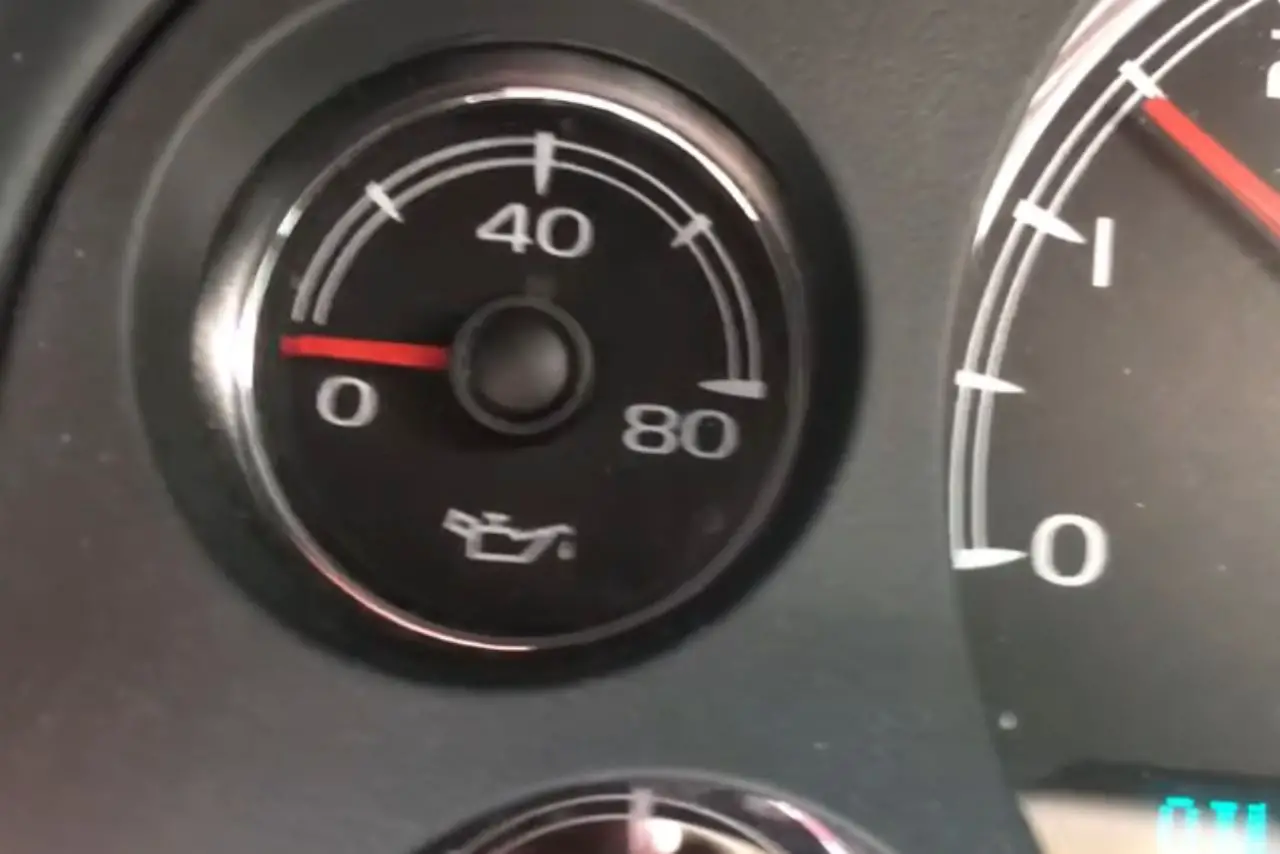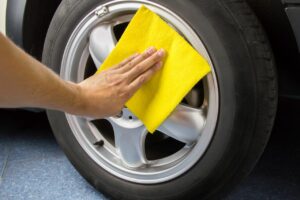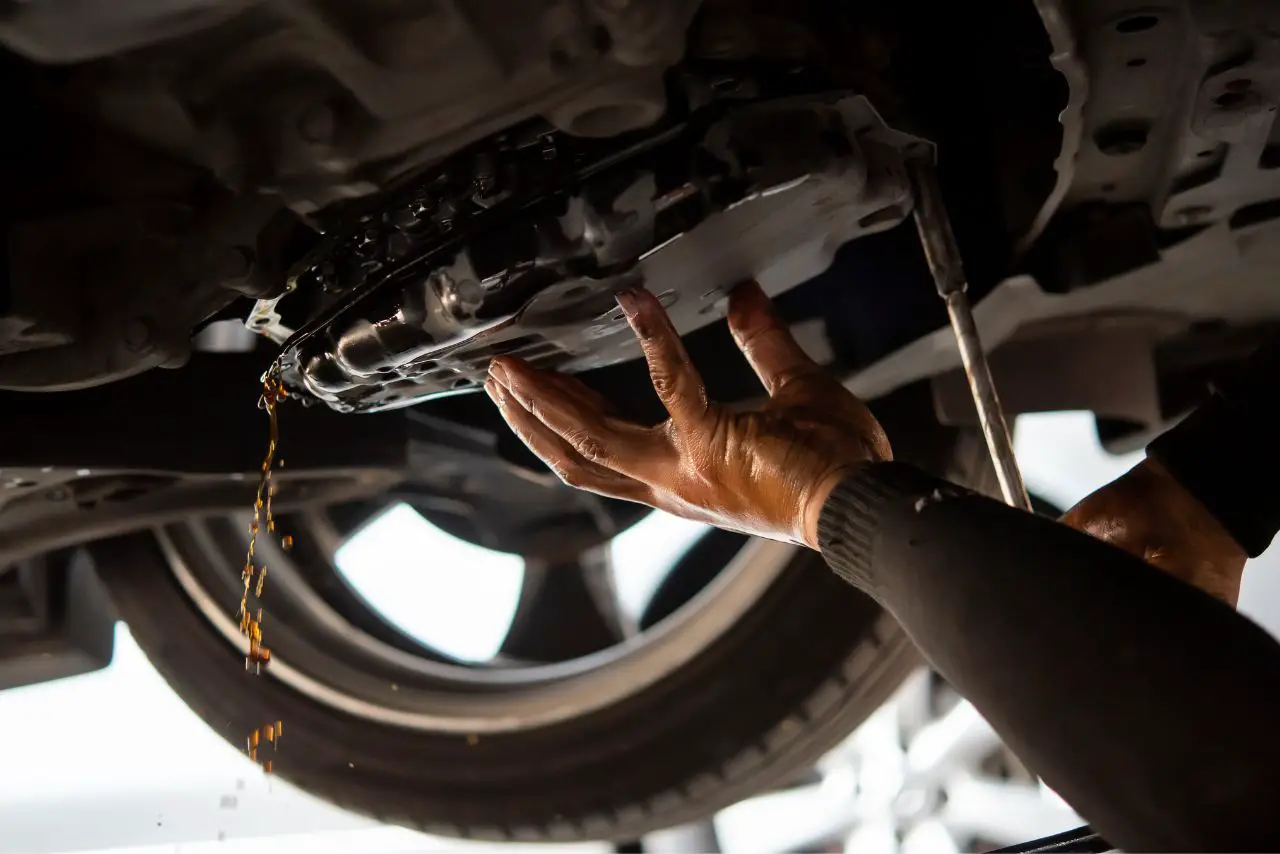If you’re a driver, you know that the oil pressure gauge in your car is one of the most important indicators of your engine’s health.
It shows you the amount of pressure your engine oil is exerting on its moving parts, which is critical to ensuring proper lubrication and preventing damage.
But what if your Oil Pressure Gauge Not Working? This can be a serious problem that requires immediate attention, as it can put your engine at risk of damage or failure.
If your oil pressure gauge isn’t working, don’t drive your car. Low oil pressure can damage your engine. The most common causes of a non-working oil pressure gauge are a faulty oil pressure sender unit or a wiring issue.
Table of contents
Importance of the Oil Pressure Gauge:
You might not realize it, but that oil pressure gauge is crucial for keeping your engine running smoothly. The importance of oil pressure sensors cannot be overstated.
The gauge provides a crucial measurement that helps you keep your engine lubricated and running at optimal levels. Without it, you could be facing serious engine damage or even engine failure.
Oil pressure gauges are used to monitor the oil pressure in your engine. They provide a real-time measurement of the oil pressure and can alert you to any issues that may arise.
Troubleshooting oil pressure issues is essential to keeping your engine running smoothly. If your gauge is not working, it could indicate that there’s a problem with your engine’s oil pressure.
If your oil pressure gauge is not working, it’s important to get it checked out as soon as possible.
Ignoring the issue can lead to serious engine damage, which can be expensive to repair. It’s important to take your vehicle to a trusted mechanic who can diagnose the issue and provide a solution.
Don’t take any chances with your engine – get your oil pressure gauge checked out today.
Reasons for Oil Pressure Gauge Not Working:

Faulty Sensor:

One possible reason for the malfunction could be a faulty sensor. The oil pressure gauge relies on a sensor that sends signals to the gauge to display the pressure readings.
If the sensor is defective, it may cause the gauge to malfunction or stop working altogether. This is one of the most common causes of oil pressure gauge malfunctions.
Broken or Damaged Gauge Itself:
Another common cause of oil pressure gauge malfunction is a broken or damaged gauge itself. If the gauge is damaged, it may not be able to display the correct readings, or it may not work at all.
In such cases, a replacement gauge may be necessary. However, before replacing the gauge, it is essential to troubleshoot the problem to ensure that there are no other underlying issues.
Troubleshooting Steps for Oil Pressure Gauge:
Troubleshooting steps for oil pressure gauge malfunction typically include checking the wiring and connections between the gauge and the sensor.
Loose or damaged wiring can cause the gauge to malfunction or stop working altogether. Additionally, it is important to check the oil pressure level to ensure that it is within the recommended range.
If the oil pressure level is low, it may also cause the gauge to malfunction. By following these troubleshooting steps, you can identify the root cause of the problem and take appropriate measures to fix the issue.
| Common Causes | Troubleshooting Steps |
|---|---|
| Faulty Sensor | Check the wiring and connections between the gauge and the sensor |
| Broken Gauge | Verify the oil pressure level is within the recommended range |
| Loose or Damaged Wiring | Replace the gauge if necessary |
Oil pressure gauge malfunction can be caused by several factors, including a faulty sensor, broken gauge, and loose or damaged wiring.
Troubleshooting is necessary to identify the root cause of the problem, and appropriate measures can then be taken to fix the issue.
By following the troubleshooting steps and identifying the underlying issue, you can ensure that your oil pressure gauge works correctly and helps you to keep your vehicle running smoothly.
Symptoms of a Malfunctioning Oil Pressure Gauge:

Feeling anxious about your car’s health? If your dashboard shows erratic readings, it’s high time you had a mechanic check your engine’s oil pressure.
A malfunctioning oil pressure gauge can be a sign of a bigger engine problem, and you don’t want to ignore it.
Gauge Reading Zero Even when The Engine Is Running:
One of the most common symptoms of a malfunctioning oil pressure gauge is the gauge reading zero even when the engine is running.
This could indicate a faulty oil pressure sensor, which is responsible for sending oil pressure readings to the gauge.
Gauge that Reads High or Low and Fluctuates Frequently:
Another common issue is a gauge that reads high or low and fluctuates frequently. This could be caused by a damaged gauge or a problem with the oil pump.
Checking the Oil Level:
Troubleshooting tips include checking the oil level and making sure it’s at the recommended level. You can also check the oil pressure sensor and the gauge itself for any signs of damage or wear.
If you’re not comfortable doing this yourself, it’s best to have a mechanic take a look.
Common gauge failures include a broken gauge needle or a faulty gauge motor, both of which can be replaced by a mechanic.
Here is the video to check the symptoms:
Checking the Oil Pressure Gauge:
Hey there car enthusiasts, let’s dive into how to check if your oil pressure gauge is functioning properly.
Check the Oil Pressure Sensor:
One of the first things you should do is check the oil pressure sensor. This sensor is responsible for detecting the pressure of the oil in your engine and sending that information to your gauge.
Use a Multimeter to Measure the Voltage Output:
To check if the sensor is working properly, you can use a multimeter to measure the voltage output. If the voltage is within the range specified by the manufacturer, then the sensor is functioning properly.
However, if the voltage is outside of that range, then the sensor needs to be replaced.
Visual Inspection of The Wiring:
Another troubleshooting technique you can use to check your oil pressure gauge is to perform a visual inspection of the wiring. Check to see if any wires are frayed or broken, as this can cause the gauge to malfunction.
Inspect the Connector:
You should also inspect the connector that attaches the wiring to the oil pressure sensor. Make sure that it is properly secured and free of any corrosion or dirt buildup.
If you’ve checked the oil pressure sensor and wiring and still can’t figure out why your gauge isn’t working, it may be time to take your car to a mechanic.
They can perform a more in-depth diagnosis of the problem, which may involve testing the oil pressure gauge itself.
No matter what the issue may be, it’s important to address it as soon as possible to avoid any potential damage to your engine.
Fixing a Faulty Oil Pressure Gauge:
To ensure your engine’s health and avoid potential damage, you need to know how to fix a faulty oil pressure gauge in your car.
Check the Connections:
The first step in fixing a faulty gauge is to check the connections. If you find that the connections are loose or corroded, tighten them or clean them with a wire brush to ensure a secure connection.
If the connections are tight and clean, the next step is to check the oil pressure sensor. A faulty sensor can cause the gauge to malfunction.
Check the Sensor”
To check the sensor, disconnect the wire from the sensor and use a multimeter to test the resistance. If the resistance is not within the manufacturer’s specifications, replace the sensor.
If the connections and sensor are in good working order, the problem may lie with the gauge itself. In this case, the gauge will need to be replaced.
To replace the gauge, remove the dashboard panel and disconnect the wiring harness from the back of the gauge.
Remove the gauge from the dashboard and install the new gauge in its place. Reconnect the wiring harness and test the new gauge to ensure it is working properly.
Importance of Regular Maintenance:
If you want to keep your car running smoothly, it’s important to perform regular maintenance.
This includes checking your oil pressure gauge regularly, changing your oil on a regular schedule, and addressing any potential problems or issues early on.
By staying on top of these tasks, you can help prevent more serious problems from occurring and keep your car running smoothly for years to come.
Checking the Oil Pressure Gauge:
One way to diagnose the issue with your oil pressure gauge is by checking the gauge’s connections and wiring. This step is crucial in oil pressure gauge troubleshooting and diagnosis.
First, you need to locate the gauge itself, which is typically on the dashboard. Then, follow these steps:
If neither the wiring nor the sensor is the issue, it may be time to replace the gauge itself. It is important to address any issues with your oil pressure gauge promptly, as it can indicate larger issues with your vehicle’s engine.
By taking these steps, you can diagnose and fix any issues with your oil pressure gauge quickly and efficiently.
Checking the connections and wiring of your oil pressure gauge is a crucial step in diagnosing any issues with it.
By following the steps outlined above, you can easily troubleshoot and diagnose any issues with your gauge, ensuring that your vehicle is running smoothly and safely.
Remember, regular maintenance is key to avoiding costly repairs and keeping your vehicle in top condition.
Changing the Oil Regularly:
Regularly changing your vehicle’s oil is essential for maintaining its overall health and performance.
The frequency with which you should change your oil depends on your vehicle’s make, model, and age, as well as the type of oil you use and your driving habits.
Generally, it is recommended that you change your oil every 5,000 to 7,500 miles or every six months, whichever comes first. However, if you frequently drive in stop-and-go traffic, extreme temperatures, or dusty conditions, you may need to change your oil more frequently.
Failing to change your oil regularly can lead to a host of problems, including decreased engine performance, reduced fuel efficiency, and even engine damage.
Over time, oil can become contaminated with dirt, debris, and other particles that can cause friction and wear on your engine’s moving parts.
Additionally, old oil can become thicker and less effective at lubricating your engine, which can lead to increased friction and heat.
By changing your oil regularly, you can help ensure that your engine stays healthy and operates at peak performance.
Addressing Potential Problems Early:
Now that you know the importance of changing your oil regularly, it’s time to talk about being proactive when it comes to potential problems with your oil pressure gauge.
Addressing these issues early on can save you from costly repairs or even engine failure.
One of the most important proactive measures you can take is paying attention to warning signs. If you notice your oil pressure gauge is not working or fluctuating, it’s crucial to have it checked out by a professional as soon as possible.
Ignoring this warning sign can lead to serious engine damage, such as worn bearings or a damaged oil pump. So, don’t wait until it’s too late. Take action and have your oil pressure gauge inspected if you suspect any problems.
By doing so, you can ensure your engine runs smoothly and keeps you on the road to freedom.
Frequently Asked Questions:
What are the common causes of oil pressure gauge malfunction?
If your oil pressure gauge isn’t functioning properly, it could be due to a faulty oil pressure sensor, a clogged oil filter, or low oil pressure caused by a leak or insufficient oil level.
Other symptoms of low oil pressure include engine noise and reduced performance.
Can a malfunctioning oil pressure gauge cause any damage to the engine?
A malfunctioning oil pressure gauge has potential consequences for your engine, including damage and reduced performance.
Troubleshooting tips include checking the gauge, wiring, and oil levels regularly to prevent issues from arising.
How long does it take to fix a faulty oil pressure gauge?
If you take your car to a professional, fixing a faulty oil pressure gauge can cost anywhere from $100 to $500.
Doing it yourself can save money, but may take several hours depending on your level of expertise.
Is it safe to continue driving with a malfunctioning oil pressure gauge?
Driving with a malfunctioning oil pressure gauge poses potential risks that could lead to engine damage or failure.
Troubleshooting steps include checking the gauge, wiring, and oil level. It’s best to address the issue promptly and avoid any potential consequences.
How often should the oil pressure gauge be checked during regular maintenance?
Regularly checking your oil pressure gauge during maintenance is crucial for ensuring proper engine function.
Signs of low oil pressure include engine knocking and warning lights. Don’t risk engine damage – prioritize the importance of oil pressure monitoring.
Conclusion and final thoughts 💭
A malfunctioning oil pressure gauge is a serious issue that should not be taken lightly. It is crucial to keep a check on the gauge regularly to avoid any potential damage to your vehicle’s engine.
The oil pressure gauge plays a vital role in maintaining the oil pressure, which is essential for the smooth functioning of the engine.
Regular maintenance is the key to keep your vehicle running smoothly and prevent any potential issues. It is recommended to have your vehicle serviced at least once a year or as per the manufacturer’s guidelines.
By doing so, you can ensure that all the components of your vehicle are working correctly and efficiently.
In case of any issues, it is always better to get it checked by a professional mechanic to avoid any further damage to your vehicle.
Remember that prevention is always better than cure, so take care of your vehicle to avoid any potential issues.
Latest Posts:
- 10 Best Gear Oil for Limited Slip Differentials (Reviewed!)
- Allison 1000 Transmission Fluid Type (5 Best Options!)
- 91 Octane Vs 93 Which One You Use? (The Surprising Truth!)
- Oil Pressure Gauge Not Working: (Guaranteed Fix!)
- 10 Best Transmission Fluid for 4l60e (Tested by Experts!)
- 10 Best Ceramic Coating For Wheels (Used By Real Users!)












Leave a Reply